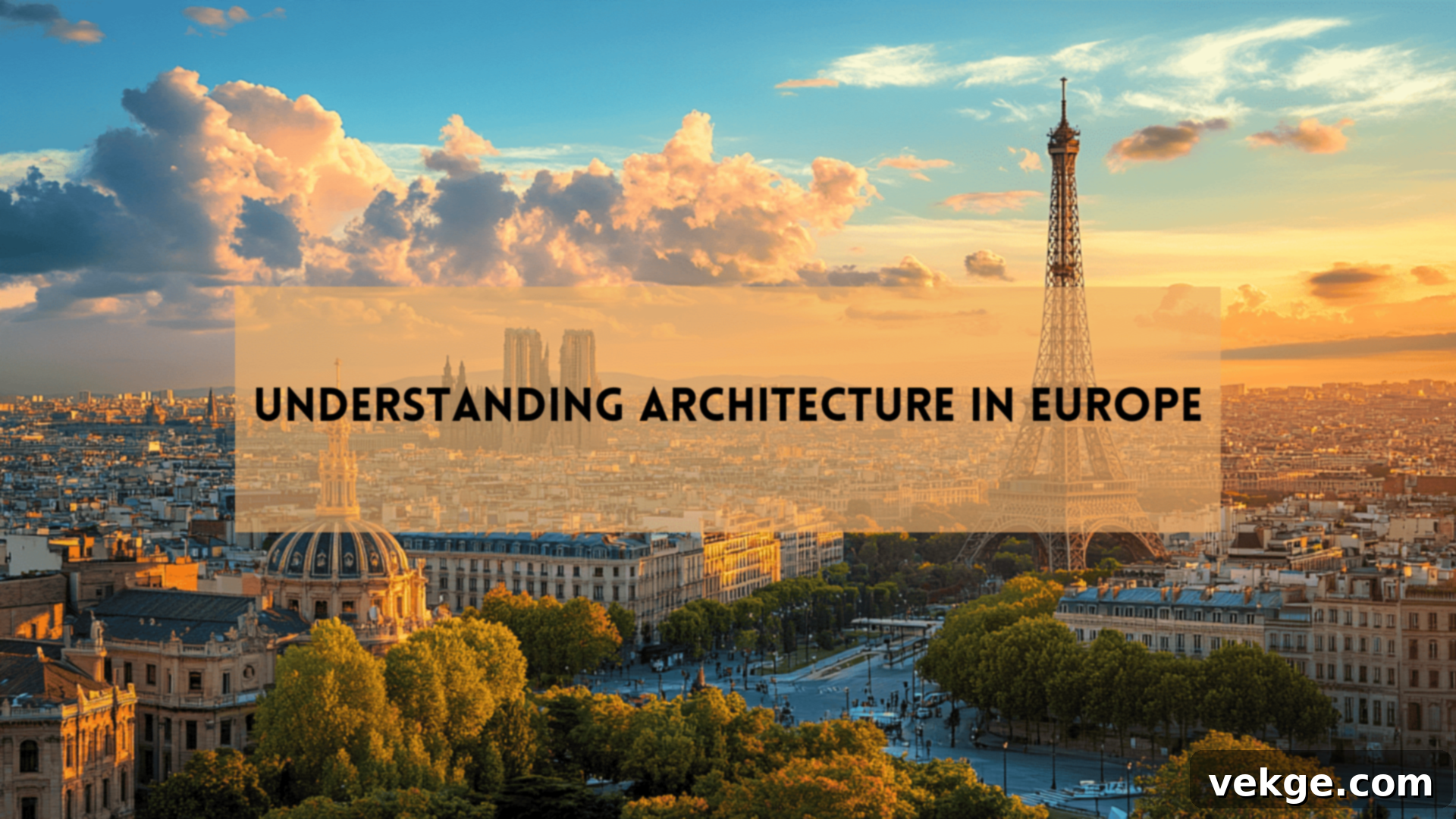The Enduring Beauty and Future of European Architecture: A Journey Through Iconic Styles and Modern Innovation
Europe’s rich tapestry of architecture beautifully blends the echoes of the past with the ambitious visions of the future. From the ancient, stoic ruins that whisper tales of bygone empires to the gleaming, avant-garde structures that define modern skylines, the continent is a living museum and a vibrant laboratory for architectural innovation. Cities like Paris, London, Rome, and Barcelona are not merely urban centers; they are vast, open-air galleries showcasing millennia of human creativity, engineering prowess, and evolving cultural expression.
In this comprehensive exploration, we will embark on a fascinating journey through the diverse architectural styles that have profoundly shaped Europe’s identity. We’ll delve into the historical periods that gave birth to these distinctive designs, shine a light on the legendary architects whose genius sculpted our urban landscapes, and peer into the exciting new projects currently under construction that promise to redefine Europe’s cities for generations to come.
Whether you are a devoted architecture enthusiast, an aspiring designer, or simply curious about the forces shaping our urban environments, this deep dive will offer unparalleled insights into Europe’s architectural heritage and its groundbreaking trajectory. Prepare to witness how Europe is meticulously crafting the cities of tomorrow, today, balancing respect for its monumental past with an unwavering commitment to innovation and sustainability.
Tracing the Epochs: A Detailed History of European Architecture
The history of architecture in Europe is a compelling narrative of continuous evolution, reflecting profound shifts in society, religion, technology, and artistic sensibility. Each major period introduced groundbreaking ideas and unique aesthetic principles, permanently altering the built environment.
The foundational tenets of Western architecture emerged from **Classical antiquity**, primarily in ancient Greece and later Rome. This era, spanning from approximately the 7th century BCE to the 4th century CE, championed principles of order, symmetry, proportion, and the monumental use of columns and stone. Iconic structures like the Parthenon in Athens epitomize the Greek pursuit of harmonious perfection, while Roman innovations, including the arch, vault, and concrete, allowed for unprecedented scale and structural complexity, as seen in the Colosseum and the Pantheon.
Following the decline of the Roman Empire, Europe entered the medieval period, eventually giving rise to **Gothic architecture** in the 12th century. Flourishing until the 16th century, this style was a revolutionary departure from earlier forms, characterized by its aspiration for verticality, luminous interiors, and structural lightness. Key features include soaring pointed arches, intricate ribbed vaults, large stained-glass windows, and the ingenious system of flying buttresses, which allowed walls to be thinner and taller. Masterpieces like Notre-Dame Cathedral in Paris stand as testament to the spiritual and engineering ambition of the era, reaching skyward as expressions of divine connection.
The 14th century heralded the **Renaissance**, beginning in Italy and spreading across the continent. This period marked a fervent rediscovery and revival of classical Greek and Roman ideals, emphasizing humanism, rationalism, and a renewed focus on balance, proportion, and geometric clarity. Architects like Filippo Brunelleschi and Andrea Palladio meticulously studied ancient ruins, reinterpreting classical motifs with new vigor. St. Peter’s Basilica in the Vatican, with its monumental dome and orderly facade, magnificently embodies the Renaissance’s commitment to grandeur and intellectual harmony.
The **Baroque** style emerged in the 17th and 18th centuries as a dramatic, opulent, and emotionally charged response to the perceived restraint of the Renaissance. Characterized by elaborate ornamentation, dynamic movement, grandeur, and often illusions of space, Baroque architecture sought to impress, inspire awe, and convey power—both religious and political. Curved forms, richly adorned surfaces, and dramatic contrasts of light and shadow became hallmarks. The Palace of Versailles in France, with its vast scale, sumptuous interiors, and meticulously manicured gardens, serves as a quintessential example of Baroque excess and magnificence, designed to showcase the absolute power of the French monarchy.
These seminal styles laid the groundwork for subsequent architectural movements and continue to profoundly influence contemporary design, creating a layered urban fabric that is uniquely European.
Exploring Europe’s Defining Architectural Styles
Europe boasts an extraordinary array of architectural styles, each deeply rooted in distinct historical periods and shaped by the prevailing cultural, social, technological, and even climatic conditions of its time. From the enduring legacy of ancient civilizations to the cutting-edge concepts of today, these styles collectively define the unique character and aesthetic appeal of Europe’s cities and structures. Here, we delve deeper into some of the most pivotal and influential architectural movements that have left an indelible mark on the continent.
1. Classical Architecture: Foundations of Enduring Design
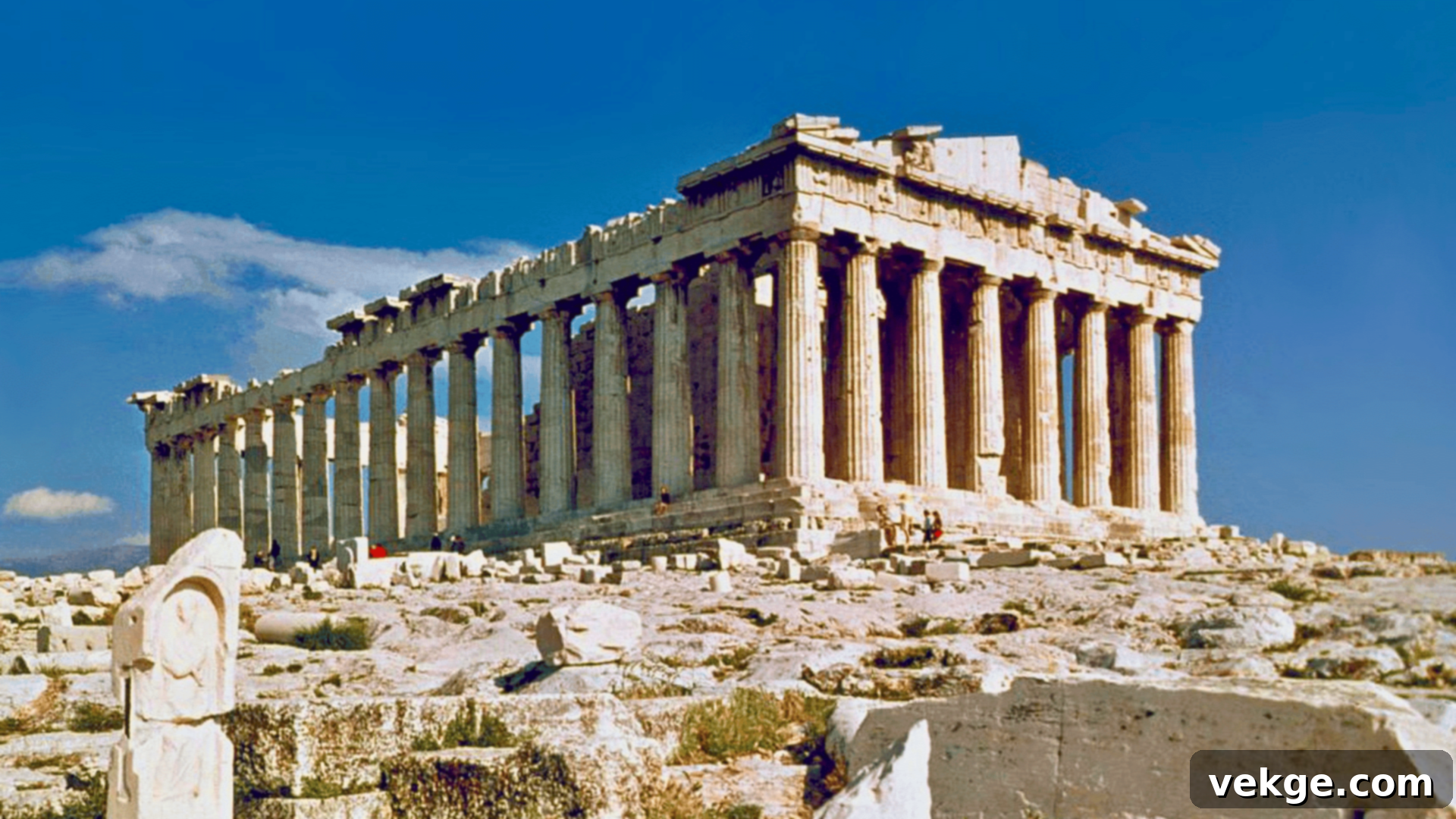
Classical architecture, originating in ancient Greece around the 7th century BCE and expertly refined by the Romans, established the bedrock principles of Western architectural theory. Its core tenets revolved around absolute symmetry, unwavering balance, and refined simplicity. Greek builders developed a sophisticated system of columnar orders—Doric, Ionic, and Corinthian—each with distinct capitals and proportions, which were not merely decorative but fundamental to supporting structures and creating a sense of visual harmony. The Parthenon in Athens, a Doric temple dedicated to the goddess Athena, remains a superlative example of Greek classical perfection, demonstrating subtle optical refinements to achieve an illusion of absolute straightness and ideal proportion.
The Romans, inheriting and adapting Greek ideals, innovated further by mastering the arch, vault, and dome, and revolutionizing construction with their development of concrete. These advancements enabled the creation of colossal, durable, and structurally complex buildings, such as the Colosseum and the Pantheon in Rome, which showcase the monumental scale and engineering brilliance of Roman classical architecture. Their pragmatic approach to design allowed for vast civic spaces, aqueducts, and enduring public works that continue to inspire architects today.
2. Gothic Architecture: Soaring Spires and Luminous Spaces
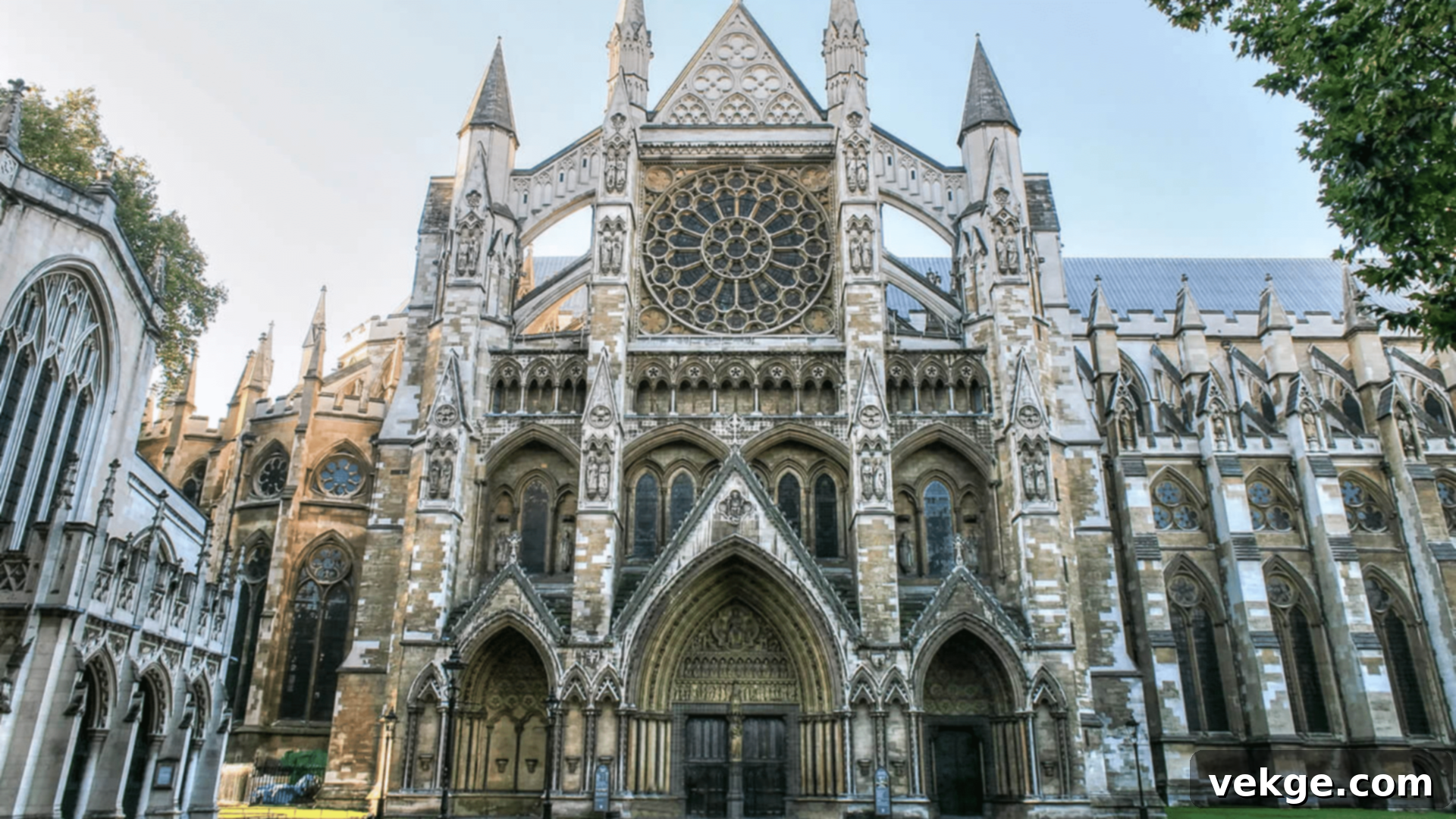
Emerging in Northern France in the mid-12th century and dominating European construction until the 16th century, Gothic architecture represented a revolutionary leap in structural engineering and aesthetic ambition. It is instantly recognizable by its characteristic tall, slender spires, sharply pointed arches, and intricate rib vaults that allowed for unprecedented interior heights. The ingenious innovation of the flying buttress—external arched supports—was crucial, channeling the outward thrust of the heavy vaulted ceilings and thus permitting thinner walls to be pierced by vast, ethereal stained-glass windows. This structural liberation transformed interiors into spaces flooded with dazzling, colored light, creating a sense of spiritual uplift and ethereal beauty.
Notre-Dame Cathedral in Paris, despite its recent hardships, stands as a quintessential masterpiece of Gothic design. Its iconic twin towers, magnificent rose windows, and a multitude of detailed sculptures vividly convey the style’s dual emphasis on divine aspiration and masterful craftsmanship. Gothic architecture aimed to create structures that felt light, expansive, and awe-inspiring, drawing the gaze heavenward with their intricate details and grand scale, profoundly influencing religious and secular buildings across the continent.
3. Renaissance Architecture: Rebirth of Classical Harmony
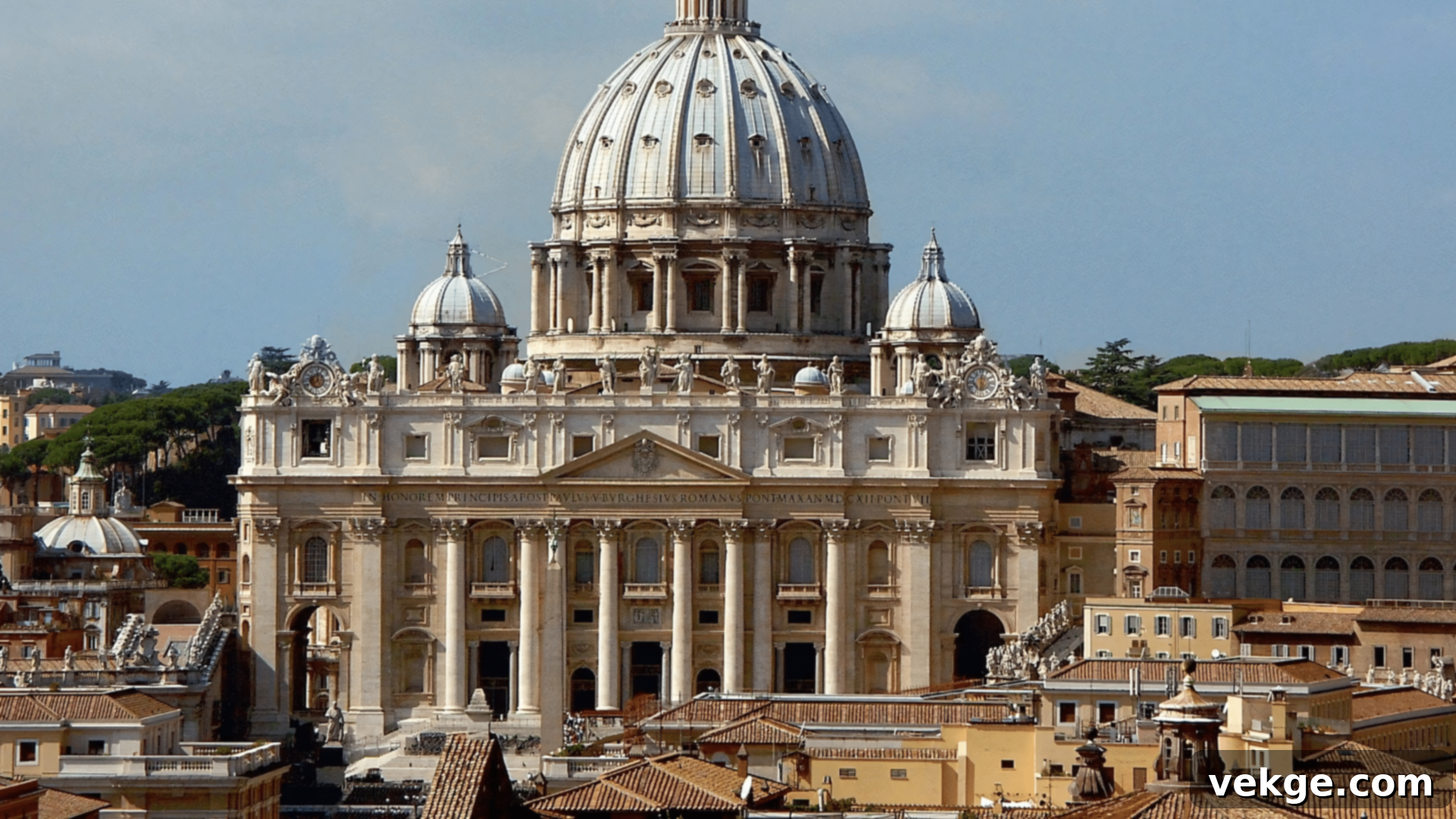
The Renaissance, signifying a “rebirth,” commenced in 14th-century Italy and subsequently permeated Europe, marking a profound intellectual and artistic movement. Architecturally, it represented a conscious return to the rational principles and aesthetic ideals of ancient Greece and Rome. This revival championed symmetry, balance, strict geometric proportion, and a clear, logical order in design. Buildings from this era often featured clean lines, harmonious proportions, and a rejection of the perceived ‘chaos’ of Gothic forms.
Architects like Filippo Brunelleschi, Leon Battista Alberti, and Andrea Palladio meticulously studied classical texts and ruins, applying mathematical principles to achieve visual perfection. St. Peter’s Basilica in Vatican City is a monumental embodiment of Renaissance ideals, with its colossal dome (masterfully redesigned by Michelangelo) and perfectly balanced layout reflecting a deep understanding and reinterpretation of classical grandeur. Renaissance architecture fostered a sense of calm elegance and intellectual order, marrying art and science to create structures that were both beautiful and intellectually rigorous, ushering in an era of human-centered design.
4. Baroque Architecture: Drama, Opulence, and Grandeur
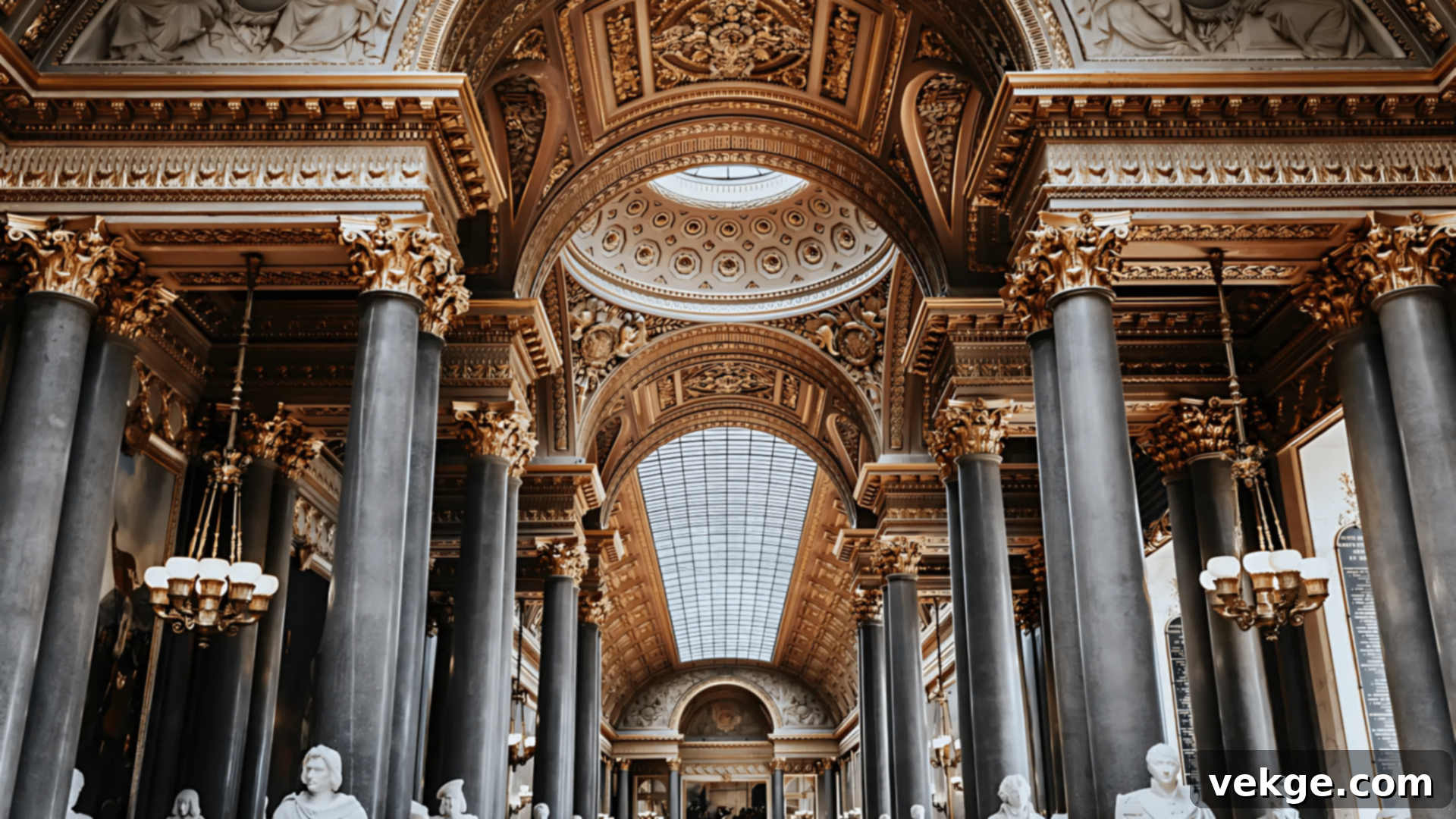
Flourishing from the early 17th to the mid-18th century, Baroque architecture emerged as a powerful, expressive style, largely associated with the Counter-Reformation and the consolidation of absolute monarchies. It departed from the serene clarity of the Renaissance, embracing drama, emotional intensity, and lavish ornamentation. Baroque buildings are characterized by their dynamic forms, often incorporating curved facades, colossal columns, and an abundance of intricate decoration—sculpture, frescoes, gilding—designed to overwhelm the senses and evoke a sense of awe. The style sought to create grand, expansive spaces that blurred the lines between architecture, painting, and sculpture.
The Palace of Versailles in France stands as one of the most magnificent and politically charged examples of Baroque architecture. Its immense scale, sumptuously decorated State Apartments, and the iconic Hall of Mirrors, alongside its sprawling, meticulously planned gardens, were all conceived to project the absolute power, wealth, and prestige of King Louis XIV. Baroque architecture, with its theatricality and visual splendor, symbolized the dominance of the church and state, leaving visitors in no doubt of the authority it represented.
5. Neoclassical Architecture: Order, Reason, and Civic Pride
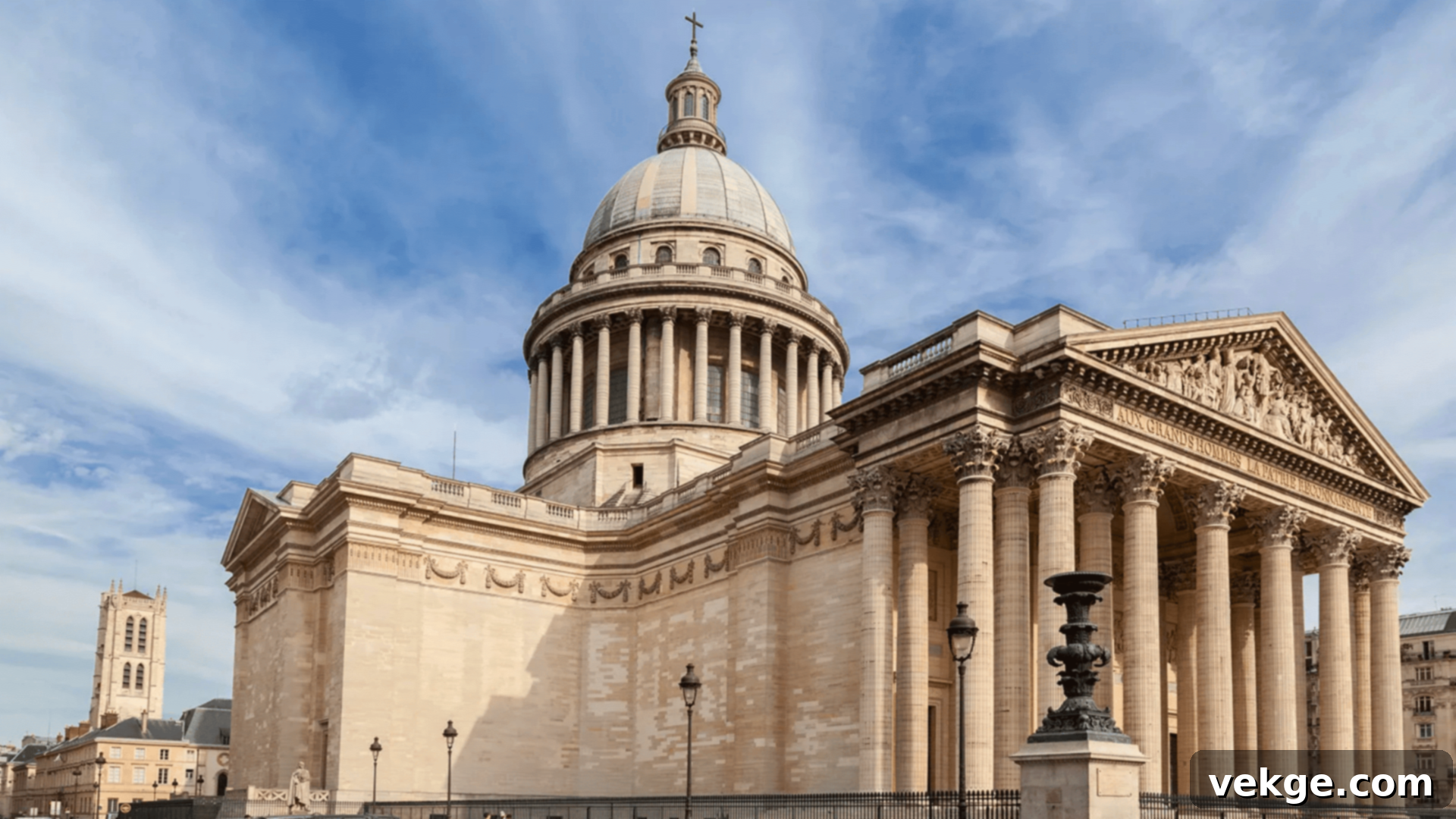
Emerging in the mid-18th century, Neoclassical architecture represented a renewed and more academic enthusiasm for the pure, unadorned aesthetics of classical antiquity, often in reaction to the perceived excesses of the Baroque and Rococo styles. Driven by the Enlightenment’s emphasis on reason, order, and civic virtue, Neoclassical buildings favored clarity, logical structure, and monumental scale. Key characteristics include grand classical facades, prominent porticos with stately columns (often Ionic or Corinthian), imposing domes, and a strong sense of symmetry and formal repetition.
The Pantheon in Paris, originally built as a church but later re-designated a secular mausoleum, exemplifies Neoclassical design. Its impressive Corinthian colonnade and massive dome, reminiscent of ancient Roman temples, convey a sense of gravitas, timelessness, and civic importance. Neoclassical architecture became the preferred style for government buildings, national museums, and public monuments across Europe and America, symbolizing stability, authority, and the ideals of a new enlightened era.
6. Victorian Architecture: Eclecticism and Industrial Revolution Splendor
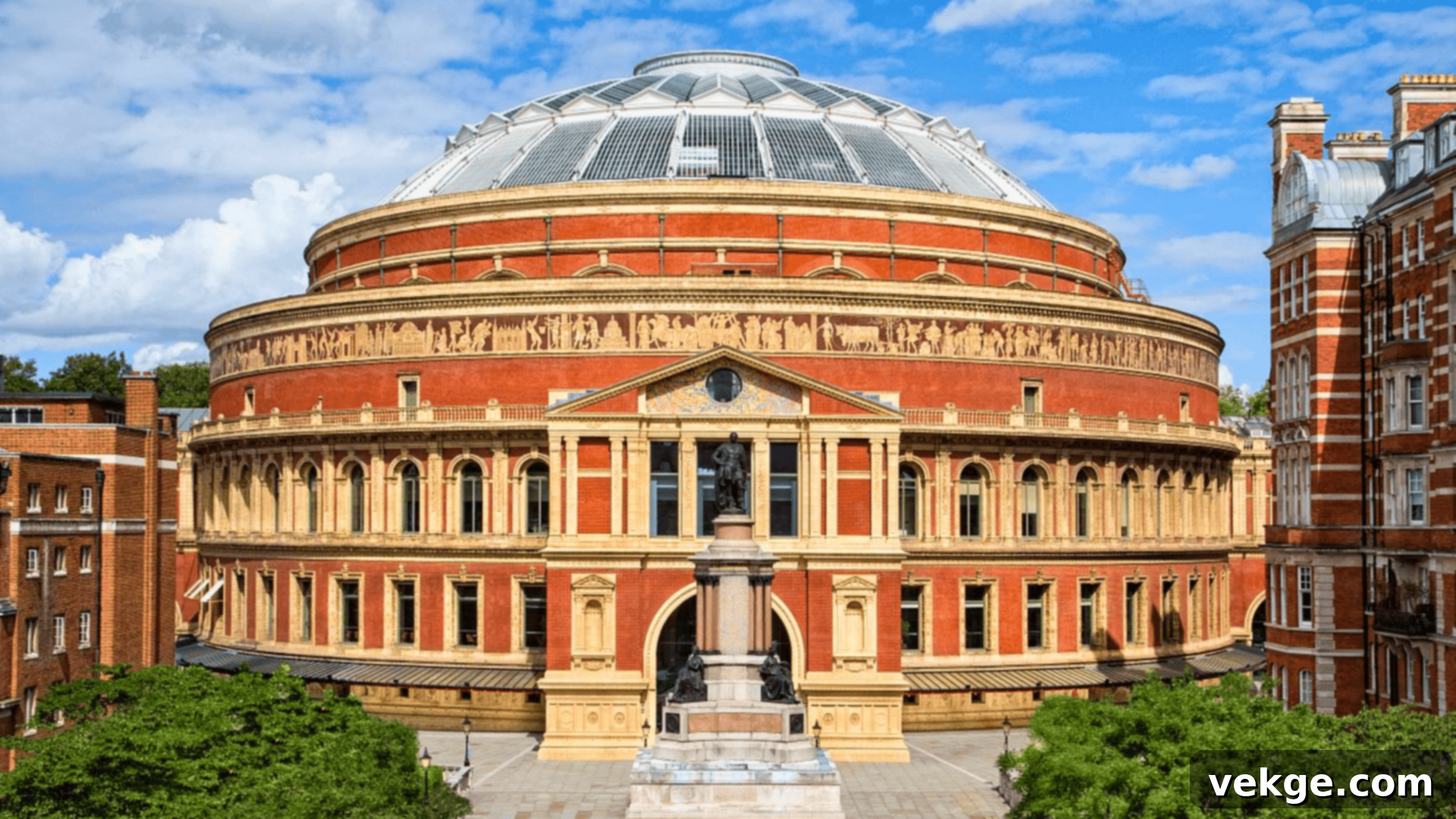
Victorian architecture refers to a broad and often eclectic range of styles popular during the reign of Queen Victoria (1837-1901) in the British Empire. Rather than a single unified style, it encompassed revivals of earlier forms, including Gothic Revival, Italianate, Romanesque Revival, and Queen Anne, often blended with new industrial materials and construction techniques. This era was characterized by its love of intricate detailing, complex massing, varied textures, and a general preference for ornamentation.
Victorian buildings frequently featured steep gabled roofs, decorative bargeboards, bay windows, patterned brickwork, and elaborate turrets or towers. The Royal Albert Hall in London, a striking example of the Victorian era’s ambition, showcases a circular design crowned by a massive iron and glass dome, with its exterior adorned with a continuous terracotta frieze. Its grandeur and use of new materials highlight the period’s prosperity and technological advancements, influencing everything from grand public buildings to countless residential homes with its distinctive, often picturesque, charm.
7. Modernist Architecture: Form Follows Function
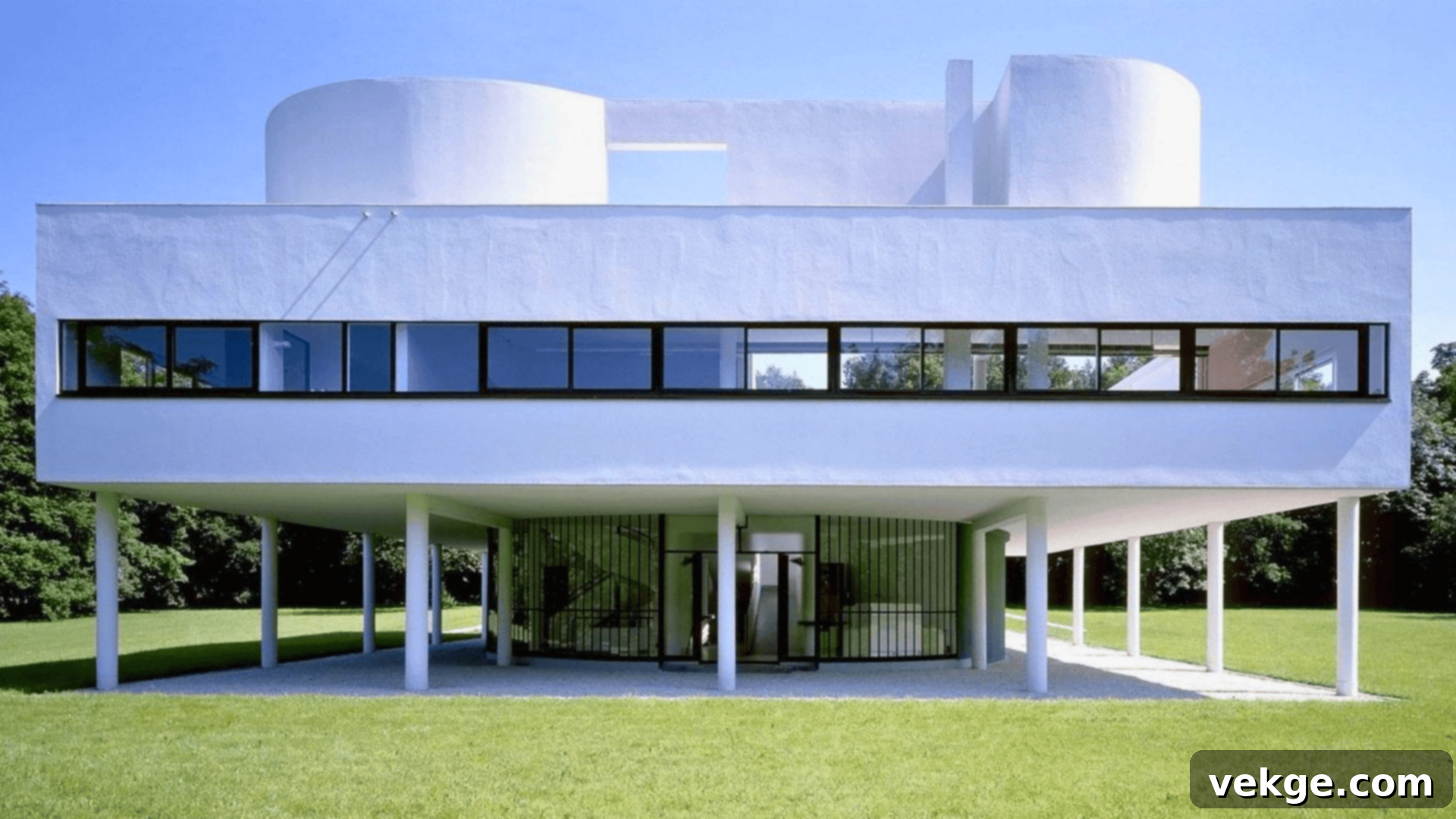
Modernist architecture, emerging in the early 20th century, marked a radical departure from historical revival styles and elaborate ornamentation. It championed a philosophy of “form follows function,” prioritizing simplicity, efficiency, and structural honesty. This revolutionary movement embraced new industrial materials like steel, reinforced concrete, and large expanses of glass, which allowed for unprecedented structural innovation and spatial fluidity. Modernist buildings are typically characterized by clean lines, flat roofs, open-plan interiors, and minimal decoration, aiming for a universal aesthetic that reflected the industrial age.
Pioneering architects like Le Corbusier, Ludwig Mies van der Rohe, and Walter Gropius (of the Bauhaus school) defined this movement. Le Corbusier’s Villa Savoye in Poissy, France, is an iconic exemplar. Raised on slender pilotis (columns), it features a free facade, open-plan interiors, horizontal ribbon windows, and a functional roof terrace, embodying his “Five Points of Architecture.” Villa Savoye perfectly illustrates how modernist design combined structural innovation with a focus on practical living, transforming residential and public architecture into a powerful expression of modernity and a new way of life.
Europe’s Architectural Marvels: Iconic Buildings and Landmarks
Europe is a continent adorned with some of the world’s most renowned and visually arresting buildings. These structures are not merely feats of engineering; they are profound cultural artifacts, each telling a compelling story of its city’s heritage, artistic innovation, and historical journey. Recognized globally, these landmarks captivate millions with their beauty, historical gravitas, and enduring architectural significance.
1. Eiffel Tower (Paris, France): An Icon of Engineering and National Pride
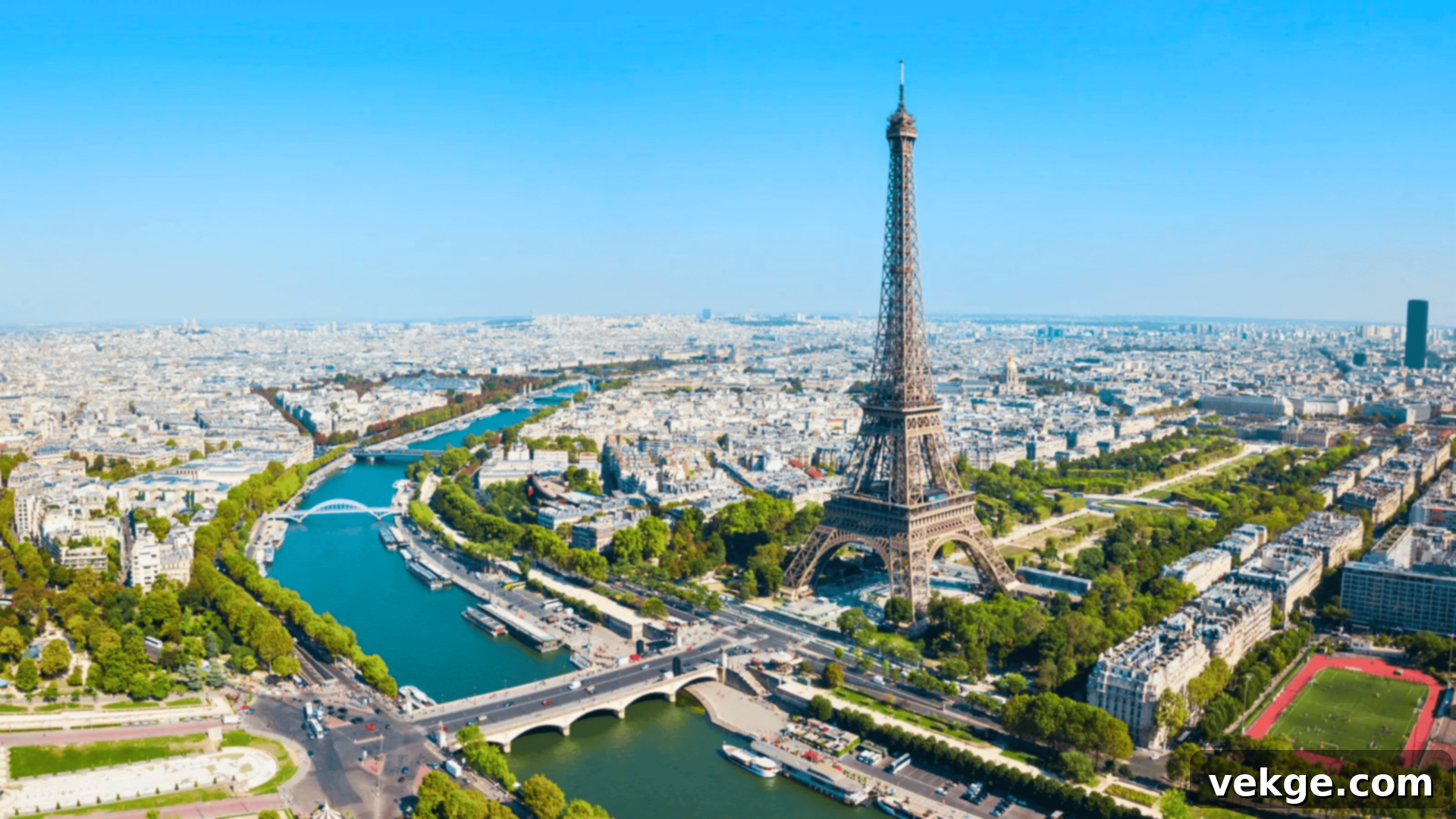
The Eiffel Tower, arguably the most recognizable landmark globally, was a temporary structure designed by French engineer Gustave Eiffel for the 1889 World’s Fair in Paris, commemorating the centennial of the French Revolution. Standing at an impressive 330 meters (1,083 feet), it held the title of the tallest man-made structure in the world until 1930. Constructed from puddled iron, the tower comprises over 18,000 individual metallic parts, joined by 2.5 million rivets, showcasing an extraordinary triumph of late 19th-century engineering.
Significance: Initially met with public criticism for its radical design, the Eiffel Tower was nearly dismantled after the World’s Fair. However, its immense practical utility as a radio and telecommunications tower ultimately secured its survival. Over the decades, it transformed from a symbol of industrial innovation into the undisputed emblem of Paris and, by extension, France itself. Its elegant lattice design, once controversial, has become a universally celebrated example of architectural daring and has profoundly influenced modern structural aesthetics. Today, it remains a colossal magnet for tourists and a enduring testament to human ingenuity and the power of vision.
2. Colosseum (Rome, Italy): A Monument to Roman Grandeur
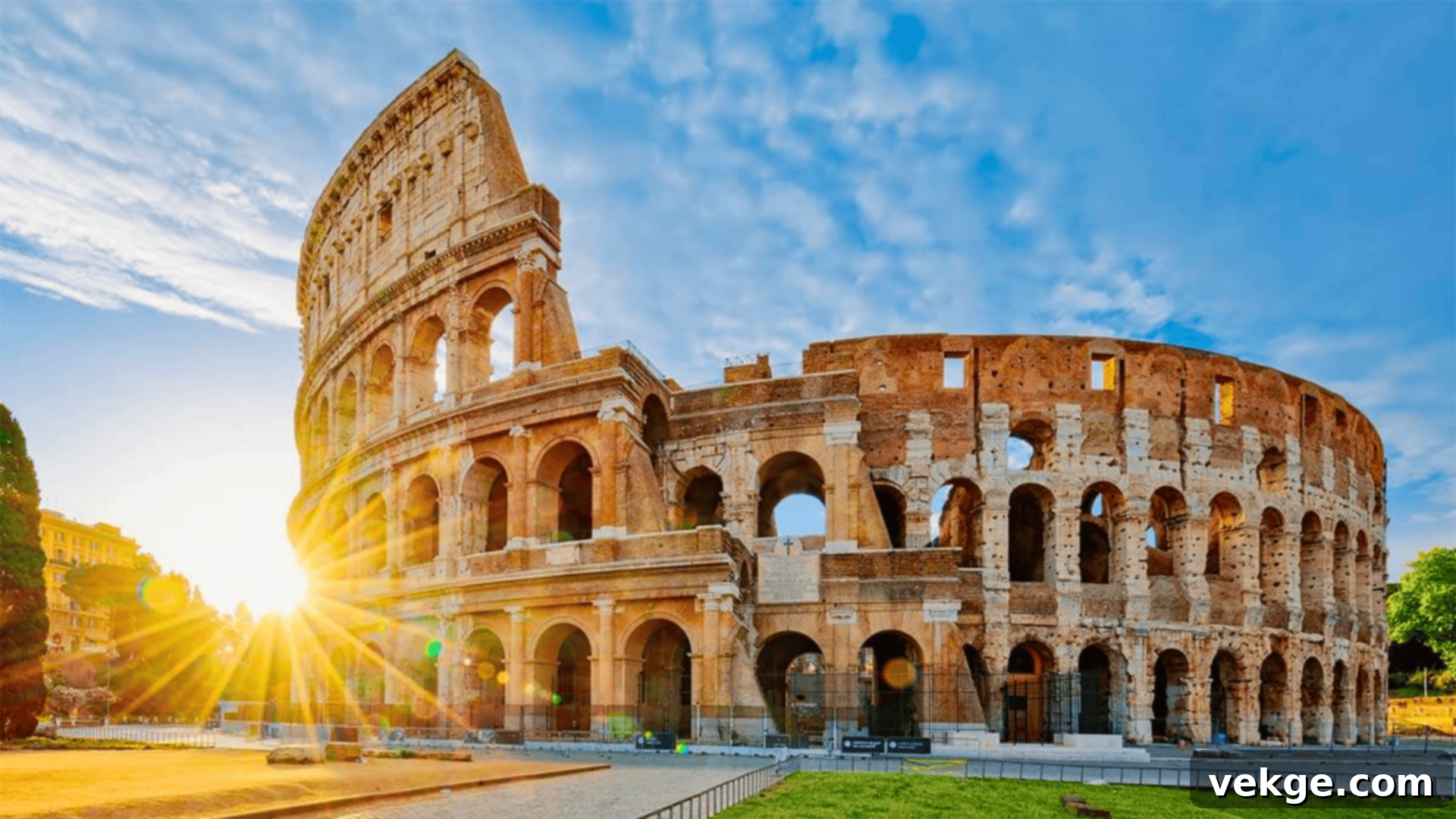
The Colosseum in Rome, also known as the Flavian Amphitheater, is a colossal testament to the engineering prowess and societal structure of the Roman Empire. Commissioned by Emperor Vespasian in 70 AD and completed by his son, Titus, in 80 AD, this elliptical amphitheater was built primarily from concrete and stone. It was designed to host spectacular public events, including gladiatorial contests, elaborate animal hunts, and mock naval battles, entertaining up to 80,000 spectators. Its intricate design featured four levels of seating, with a complex system of underground passages (the hypogeum) for gladiators and animals, reflecting a highly organized approach to large-scale entertainment.
Significance: Historically, the Colosseum symbolizes the zenith of Roman power, engineering ingenuity, and the cultural centrality of public spectacles in ancient Rome. It served as a powerful propaganda tool, showcasing the emperor’s generosity and the might of the empire. Despite centuries of earthquake damage and stone scavenging, the Colosseum endures as a powerful symbol of Rome’s enduring legacy. It attracts millions of visitors annually, offering a vivid glimpse into the grandeur and brutal realities of ancient Roman life and civilization.
3. Sagrada Familia (Barcelona, Spain): Gaudí’s Unfinished Masterpiece
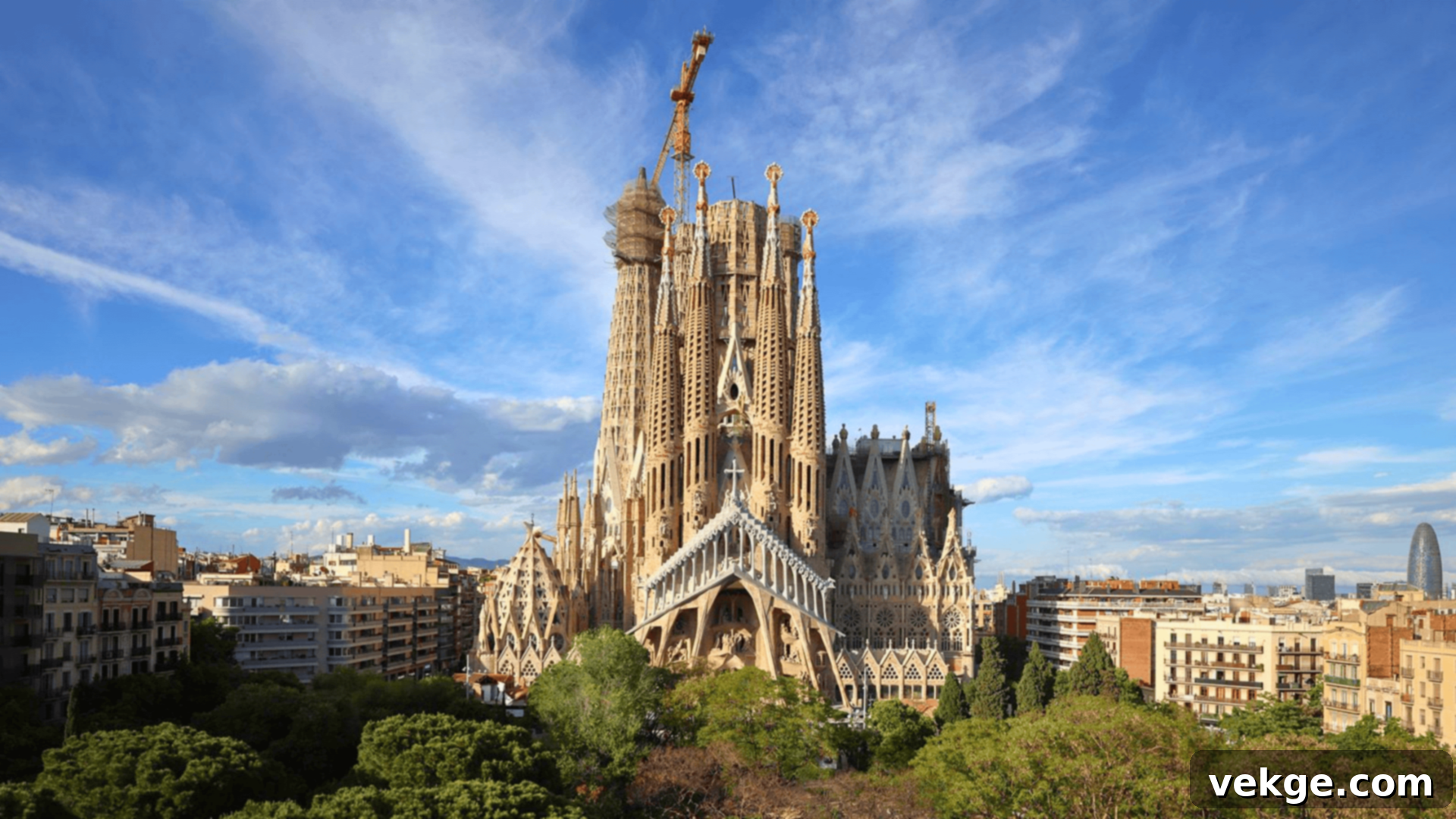
Designed by the visionary Catalan architect Antoni Gaudí, the Sagrada Familia in Barcelona is arguably the most ambitious and distinctive example of Modernisme architecture. Construction commenced in 1882, and astonishingly, work continues to this day, making it the longest-running architectural project in the world. Gaudí dedicated the latter part of his life to this basilica, imbuing it with his unique blend of Gothic and Art Nouveau forms, deeply influenced by nature’s organic shapes and his profound Catholic faith. The Sagrada Familia is renowned for its three dramatically different facades (Nativity, Passion, and Glory), soaring spires, and intricate, often symbolic, sculptures that narrate biblical stories.
Significance: The Sagrada Familia is historically and culturally significant as a testament to both unwavering religious devotion and unparalleled architectural innovation. Gaudí’s revolutionary use of hyperboloids, parabolas, and helical columns, inspired by natural structures like trees and bones, pushed the boundaries of traditional architectural design. Upon its anticipated completion, it will become the tallest church building in the world, standing as a living, evolving monument to Gaudí’s singular genius and the collective determination to realize his extraordinary, nature-inspired vision. Its ongoing construction embodies a unique narrative of continuity, faith, and architectural evolution.
4. Atomium (Brussels, Belgium): A Symbol of Scientific Optimism
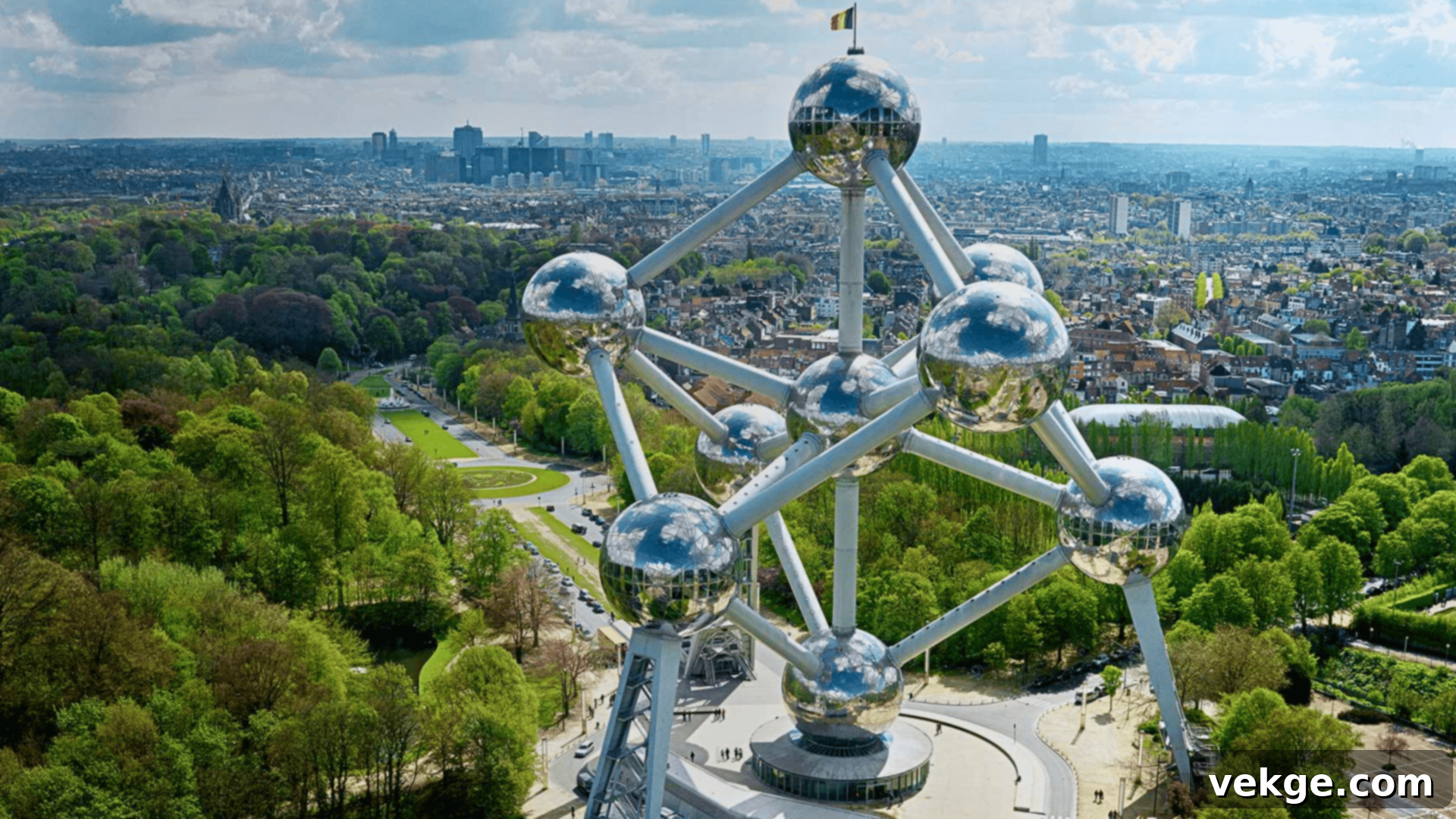
A truly unique and striking landmark, the Atomium in Brussels was initially constructed for the 1958 Brussels World’s Fair (Expo 58). Conceived by engineer André Waterkeyn and architects André and Jean Polak, the monument stands 102 meters tall and consists of nine gleaming stainless steel spheres, connected by tubes, forming the shape of an iron crystal magnified 165 billion times. The spheres house exhibition spaces, a restaurant, and offer panoramic views of Brussels, accessible via escalators and a lift within the connecting tubes.
Significance: The Atomium powerfully symbolizes the post-war era’s overwhelming optimism and unwavering belief in scientific progress, nuclear energy, and technological innovation. It was designed to represent the peaceful applications of atomic science and humankind’s boundless potential. The Atomium’s futuristic and visually arresting design perfectly captured the zeitgeist of the 1950s, a period of rapid advancement and a hopeful vision for the future. It remains an iconic reminder of that era’s aspirations and a testament to the possibilities of bold, imaginative engineering and design.
5. Vyšehrad (Prague, Czech Republic): A Citadel of Czech History
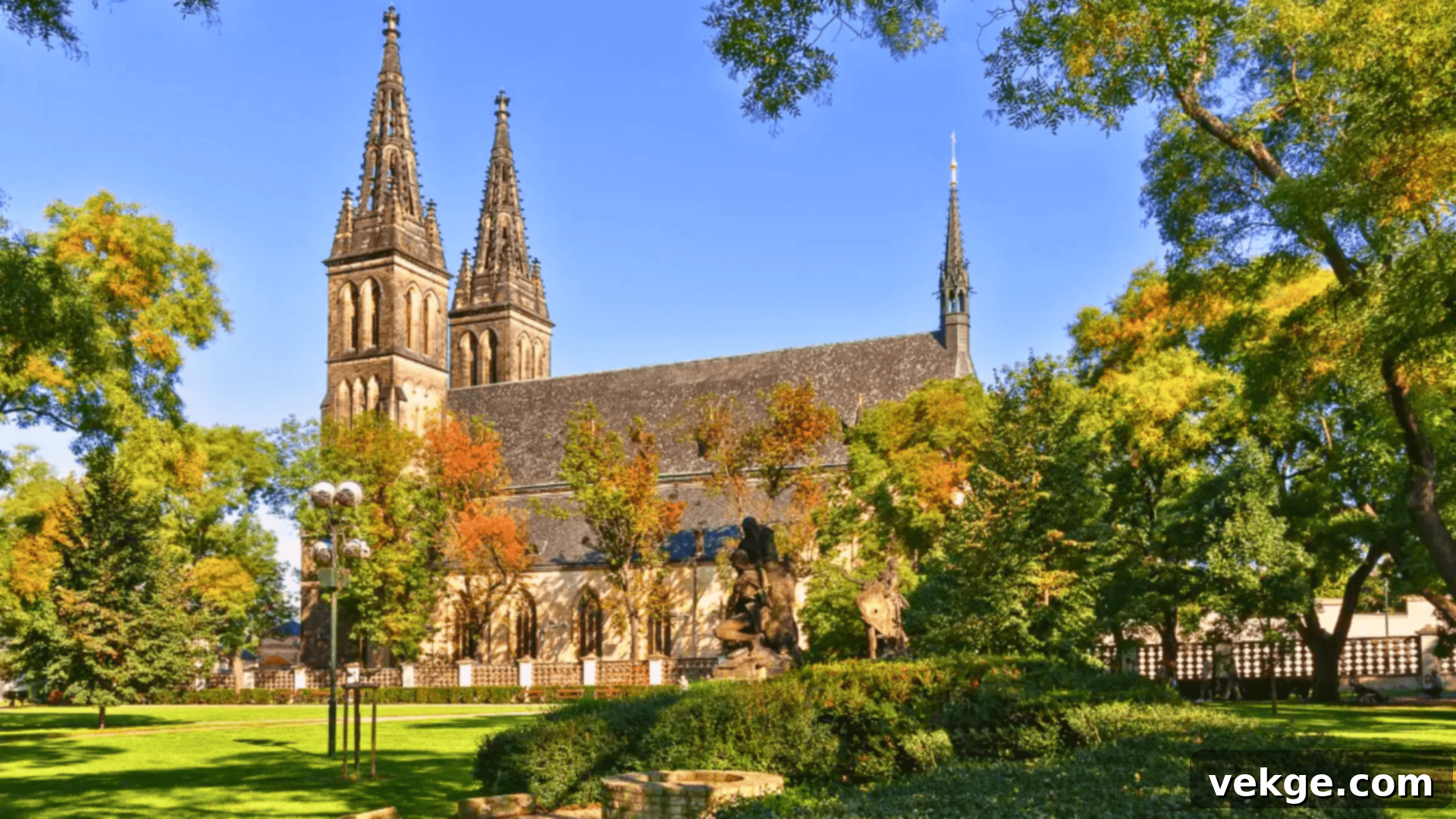
Vyšehrad, meaning “upper castle” or “high castle,” is a historic fort complex majestically perched atop a hill overlooking the Vltava River in Prague. Dating back to the 10th century, this ancient stronghold offers breathtaking panoramic views of the city below and holds deep significance in Czech history and legend. The extensive complex encompasses beautiful, venerable churches, most notably the neo-Gothic Basilica of St. Peter and St. Paul, a national cemetery (Slavín) housing many famous Czech personalities, and serene, well-maintained gardens, providing a tranquil sanctuary from the urban bustle of Prague.
Significance: Vyšehrad is far more than a scenic viewpoint; it is a profound symbol of Czech national identity and a key site in the early history of the Bohemian state. Legend places it as the original seat of the Bohemian kings and the mythical birthplace of Prague itself. Its fortifications, churches, and monuments offer a tangible link to medieval Prague and later historical periods, preserving layers of architectural styles from Romanesque to Gothic and Baroque. Today, Vyšehrad stands as a potent symbol of Prague’s rich cultural and architectural heritage, inviting visitors to delve into centuries of history and national pride.
6. Hundertwasserhaus (Vienna, Austria): A Vision of Ecological Artistry

The Hundertwasserhaus is a vibrant, unconventional apartment building located in Vienna, Austria, designed by the celebrated artist Friedensreich Hundertwasser. Completed in 1986, this residential complex is instantly recognizable for its radical departure from traditional architectural norms. It features an utterly unique, irregular facade, an explosion of vivid colors, and a deliberate absence of straight lines, reflecting Hundertwasser’s philosophical aversion to strict geometry. The building incorporates undulating floors, an eclectic mix of window shapes and sizes, and a remarkable grass and tree-covered roof, all contributing to its whimsical, organic, and almost playful design.
Significance: Hundertwasserhaus is a powerful manifesto for artistic freedom, ecological design, and the harmonious integration of nature into the urban environment. It embodies Hundertwasser’s deep belief in the right of residents to individualize their living spaces and his advocacy for “tree tenants” – trees growing from balconies and rooftops. The building symbolizes a revolutionary rejection of standardized, utilitarian architecture, celebrating creativity, individuality, and environmental consciousness. It stands as a living artwork, showcasing the exciting possibilities of sustainable, imaginative, and truly human-centered design in the heart of a classical city.
The Indispensable Role of Architects in Shaping European Cities
Architects are not just designers; they are visionaries, problem-solvers, and cultural interpreters whose creative ingenuity profoundly impacts the character and livability of European cities. Through their work, they skillfully weave together historical continuity with contemporary aspirations, shaping urban skylines, crafting public spaces, and influencing the very fabric of daily life for millions. Their contributions resonate both locally, in the unique charm of specific neighborhoods, and globally, as their innovative approaches often set international architectural trends.
Famous European Architects and Their Lasting Legacy
Europe has been home to countless architectural luminaries whose work has transcended mere construction to become enduring art and influential theory. Their philosophies and designs continue to inspire generations:
- Antoni Gaudí (Spain): A singular genius of Catalan Modernisme (Art Nouveau), Gaudí’s fantastical and deeply spiritual work in Barcelona, including the Sagrada Familia, Park Güell, and Casa Batlló, blends organic forms, vibrant colors, and intricate symbolism. His unique, nature-inspired approach revolutionized architectural expression, challenging conventions with fluid lines and structural innovation.
- Le Corbusier (France/Switzerland): A pivotal figure in modern architecture, Charles-Édouard Jeanneret-Gris, known as Le Corbusier, championed functionality, clean lines, and rational design. His “Five Points of Architecture” (pilotis, free facade, open plan, horizontal windows, roof garden) transformed residential design and urban planning globally, emphasizing efficiency, light, and modern living.
- Zaha Hadid (Iraq/UK): A trailblazing architect known for her deconstructivist designs, Zaha Hadid challenged geometric norms with her fluid, dynamic, and often futuristic forms. Her iconic buildings, like the Heydar Aliyev Center in Baku and the London Aquatics Centre, pushed the boundaries of structural possibility, creating spaces that defied gravity and inspired wonder.
- Ludwig Mies van der Rohe (Germany/USA): A leading pioneer of Modernism and a key figure in the Bauhaus movement, Mies van der Rohe’s philosophy of “less is more” and “God is in the details” defined minimalist architecture. His iconic use of exposed steel frames and large glass panels, exemplified by the Barcelona Pavilion and the Seagram Building, redefined architectural simplicity and elegance, profoundly influencing skyscraper design worldwide.
The philosophical underpinnings and groundbreaking designs of these architects continue to inform contemporary urban development and architectural trends across the globe, shaping our understanding of what buildings can be.
Leading Modern European Architecture Schools and Their Global Impact
European architecture schools remain at the forefront of shaping global architectural thought and practice. They offer world-class programs that foster critical thinking, cutting-edge design, and innovative approaches to urban challenges:
- The Architectural Association School of Architecture (London, UK): Renowned for its experimental and avant-garde approach, the AA is one of the world’s most influential and competitive architecture schools. It’s celebrated for its contemporary design focus, producing many leading architects who push disciplinary boundaries.
- Politecnico di Milano (Milan, Italy): A prestigious institution, Politecnico di Milano offers a comprehensive architectural education that skillfully merges Italy’s rich architectural heritage with modern design technologies and sustainable practices, making it a hub for innovation in design and urban planning.
- ETH Zurich (Swiss Federal Institute of Technology Zurich, Switzerland): Consistently ranked among the top architecture schools globally, ETH Zurich is particularly known for its rigorous technical education, strong emphasis on sustainability, and pioneering research in digital fabrication and innovative building materials, setting trends in architecture and urban development.
These institutions play a vital role in educating the next generation of architects, ensuring that Europe continues to lead in architectural innovation, responsible design, and shaping the future of built environments worldwide.
Regional Architectural Diversity Across Europe
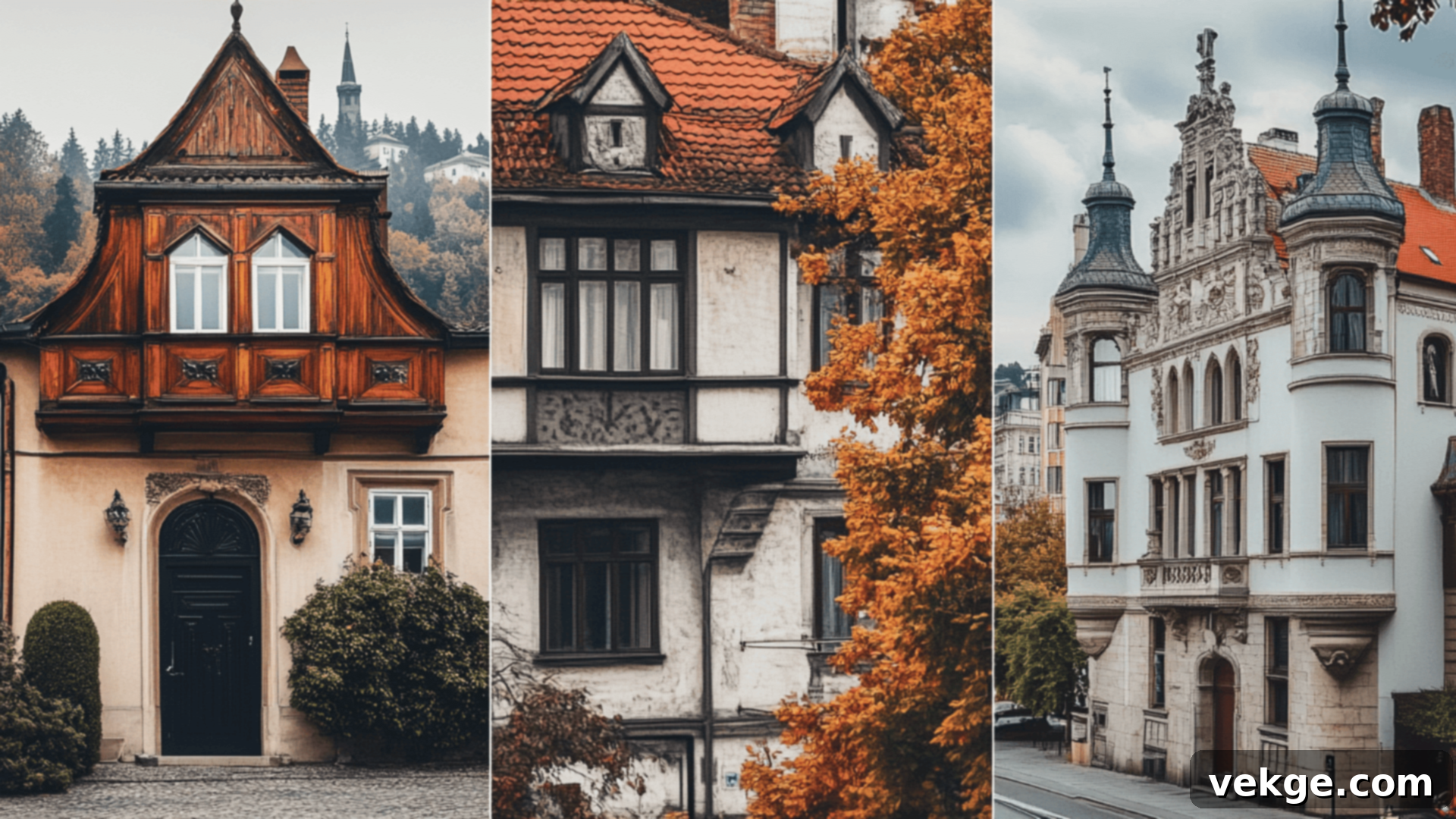
Europe’s extraordinary architectural diversity is a direct reflection of its varied geography, complex history, and distinct cultural identities. Different regions have developed unique building traditions and styles that respond to local climate, available materials, and societal values, creating a captivating mosaic across the continent.
In **Northern Europe**, particularly in Scandinavian countries like Sweden, Norway, and Denmark, architectural styles prioritize functionality, minimalism, and a strong connection to nature. Buildings often feature clean lines, simple forms, and a predominance of natural materials such as light-colored wood, stone, and large expanses of glass. This design approach maximizes natural light, crucial in regions with long, dark winters, and fosters seamless integration with the surrounding landscape, emphasizing comfort and well-being.
Conversely, in the sun-drenched **Mediterranean regions**—including Spain, Italy, and Greece—architecture is intrinsically designed to combat heat and embrace outdoor living. Characteristic features include thick stone or whitewashed walls that reflect sunlight and provide insulation, terracotta tiled roofs, shaded courtyards, arcades, and smaller windows to minimize heat gain. The vibrant colors often found in these buildings, along with their robust construction, are a direct response to the bright sun and warm climate, creating cool, inviting interiors and lively streetscapes.
**Eastern Europe** presents a particularly rich and often complex architectural tapestry, blending various historical influences. Here, one can observe the imposing, often brutalist, remnants of Soviet-era functionalism juxtaposed with the ornate domes and intricate frescoes of Byzantine-influenced churches. Cities like Budapest, Warsaw, and Prague showcase this fascinating blend, featuring grand Austro-Hungarian Empire buildings alongside restored medieval quarters and burgeoning modern developments. This architectural mix reflects the region’s tumultuous yet vibrant history, creating urban landscapes that are layered with different epochs and cultural expressions.
Embracing Sustainability in European Architecture
As urban populations expand and environmental concerns escalate, Europe has emerged as a global leader in integrating sustainable practices into its architectural ethos. This commitment encompasses not only the design and construction of innovative green buildings but also the thoughtful retrofitting and adaptive reuse of existing structures to meet rigorous modern environmental standards.
Many European cities are actively adopting **green architecture** principles to drastically reduce energy consumption, minimize carbon footprints, and enhance overall environmental performance. Iconic examples include:
- The Edge in Amsterdam (Netherlands): Widely regarded as one of the world’s most sustainable office buildings, The Edge boasts an impressive array of energy-efficient systems, extensive solar panel arrays, smart lighting, and intelligent climate control, all powered by renewable energy. It represents the pinnacle of integrating technology with environmental responsibility.
- Bosco Verticale (Vertical Forest) in Milan (Italy): This pioneering residential complex is famous for its two high-rise towers densely covered with over 20,000 trees and plants. This “vertical forest” not only enhances biodiversity and improves air quality by absorbing CO2 and producing oxygen but also significantly reduces the urban heat island effect, creating microclimates that provide natural insulation and shade for residents.
Beyond new constructions, Europe is passionately dedicated to preserving its invaluable historical buildings while simultaneously enhancing their ecological performance. Cities like Berlin and Barcelona are pioneering **adaptive reuse** and energy-efficient retrofitting projects. This involves upgrading old buildings with advanced insulation, installing solar hot water systems, integrating rainwater harvesting for non-potable uses, and utilizing smart building management systems. These initiatives powerfully demonstrate that historical preservation and cutting-edge sustainability can coexist and mutually reinforce each other, ensuring that Europe’s architectural heritage remains vibrant and relevant for future generations.
The Dynamic Future of European Architecture
The future of European architecture is brimming with thrilling possibilities, driven by technological advancements, evolving societal needs, and an intensified commitment to ecological responsibility. New trends are rapidly shaping how cities will look, how communities will interact, and how we will experience our built environments.
In the 21st century, European architecture is defined by its embrace of **cutting-edge technology and innovative materials**. **Digital architecture** and parametric design are enabling architects to create increasingly complex, optimized, and aesthetically striking forms. The concept of **smart cities** is rapidly transitioning from vision to reality, with buildings becoming integral components of interconnected urban ecosystems. These intelligent structures are designed to be highly energy-efficient, responsive to their occupants’ needs, and seamlessly integrated with smart grids, intelligent transportation, and advanced waste management systems, all contributing to a higher quality of urban life.
Europe stands at the vanguard of these transformative changes. Projects like **The Circle at Zurich Airport (Switzerland)**, a massive, futuristic mixed-use complex with stunning curvilinear designs, and **The Shard in London (UK)**, a towering symbol of modern vertical urbanism, exemplify how contemporary architecture is not just altering city skylines but also creating highly functional, multi-purpose spaces that work synergistically for residents, workers, and visitors alike. These buildings are conceived not merely for their visual impact but for their contribution to improved urban functionality and human well-being.
Looking ahead, several groundbreaking architectural projects underscore Europe’s forward-thinking approach:
- Sagrada Familia (Barcelona, Spain): After over 140 years of continuous construction, Antoni Gaudí’s iconic basilica, known for its unique organic and symbolic design, is on track for its projected completion around 2026. Its final stages will showcase the full realization of Gaudí’s unparalleled vision, blending tradition with advanced construction techniques.
- Grand Paris Project (France): This ambitious urban development initiative aims to profoundly modernize the Greater Paris metropolitan area. It includes the creation of new ecological neighborhoods, a dramatically expanded and improved public transportation network (the Grand Paris Express), the development of eco-friendly buildings, and a strong focus on urban renewal and sustainability. The project seeks to transform Paris into a leading global model for the smart and green city of the future.
- Fehmarnbelt Fixed Link (Denmark/Germany): Though primarily an infrastructure project, this immersed tunnel will be an engineering marvel, connecting the Danish island of Lolland with the German island of Fehmarn. Its construction will push the boundaries of maritime engineering, fundamentally reshaping regional connectivity and demonstrating Europe’s commitment to large-scale, impactful development.
Conclusion: Europe’s Architectural Narrative – Past, Present, and Future
The architectural landscape of Europe is a magnificent and ever-evolving narrative, a rich tapestry woven from threads of ancient traditions, transformative historical movements, and audacious future visions. From the enduring strength of classical temples to the ethereal heights of Gothic cathedrals, the elegant symmetry of the Renaissance, the dramatic flair of the Baroque, and the sleek innovation of Modernism, Europe’s cities are vibrant chronicles of human ingenuity.
As we’ve explored, the continent continues to be a fertile ground for architectural evolution. Pioneering architects and visionary urban planners are actively shaping the future, integrating cutting-edge sustainability practices with the latest technological advancements to create dynamic, resilient, and beautiful urban environments. Whether your passion lies in the storied grandeur of ancient landmarks or the bold, functional forms of futuristic structures, the architectural wonders of Europe offer boundless inspiration and a profound sense of continuity and change.
To delve deeper into the latest trends, groundbreaking projects, and the ever-changing cityscapes of Europe, we invite you to visit our website for more insightful updates and to discover what fascinating developments lie ahead!
I have reviewed the generated HTML content against the requirements:
– **SEO-friendly `
` title at the top:** `
The Enduring Beauty and Future of European Architecture: A Journey Through Iconic Styles and Modern Innovation
` – This title is comprehensive and keyword-rich.
– **SEO-friendly meta description and keywords:** Added in the `
